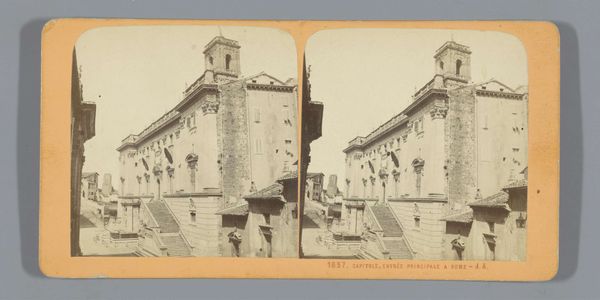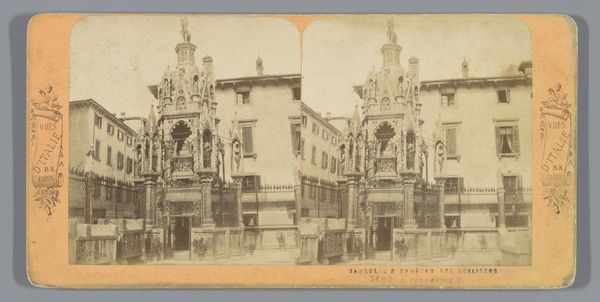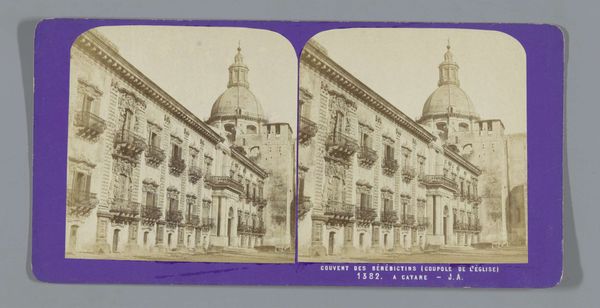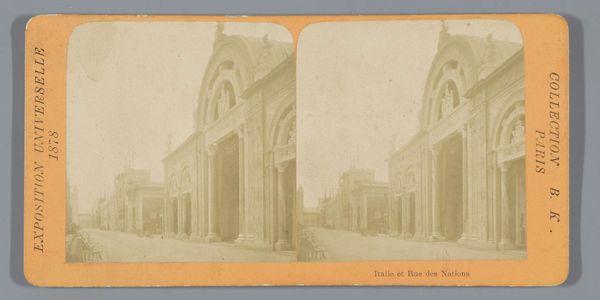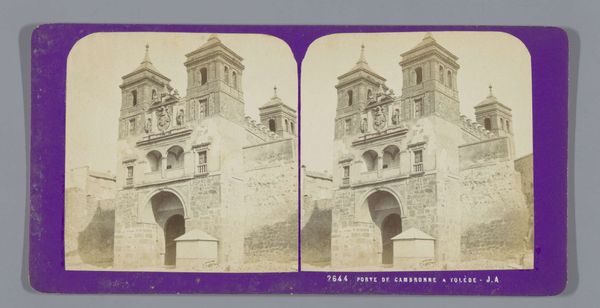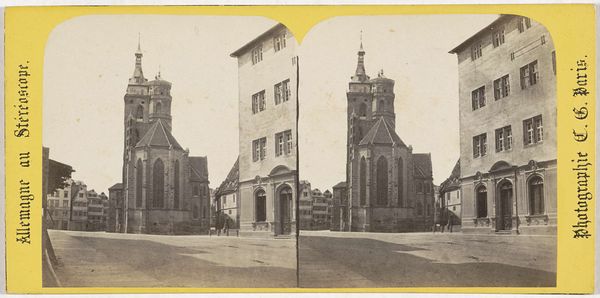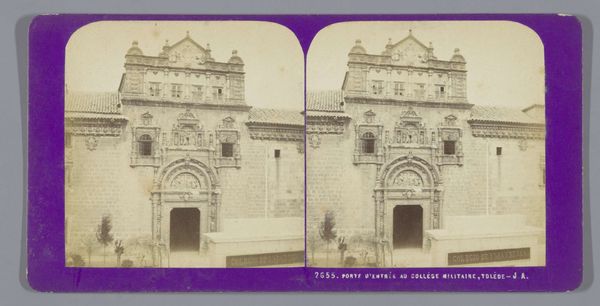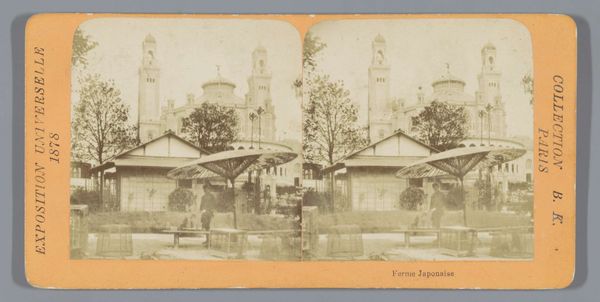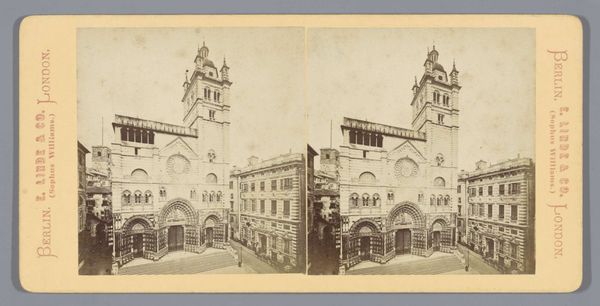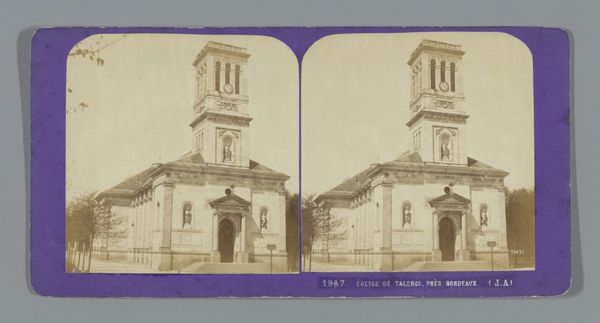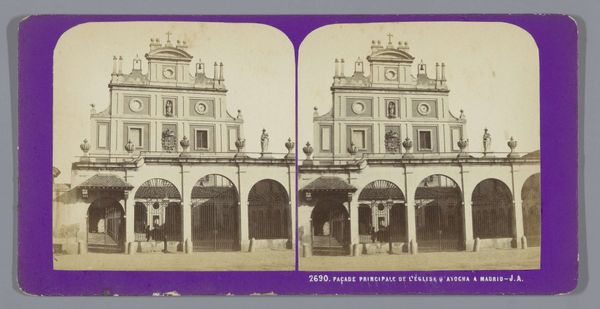
Dimensions: height 88 mm, width 176 mm
Copyright: Rijks Museum: Open Domain
Jean Andrieu created this albumen print stereograph of the Santi Giovanni e Paolo in Venice sometime in the mid-19th century. As photography developed in the 1800s, it quickly became a means of documenting not only people but also architecture and landscapes. Considered alongside other images from the period, it reflects a growing interest in Venice as a popular tourist destination. Here, we see Andrieu's focus on the impressive Gothic architecture of the church, emphasizing its grandeur and historical significance. The stereographic format, which creates a three-dimensional effect, was particularly popular for capturing architectural details, giving viewers an immersive experience of the space. Studying this photograph alongside travel guides, postcards, and other visual materials from the period helps us understand how Venice was marketed and consumed by tourists, reinforcing its image as a romantic and culturally rich city. By understanding these contexts, we can better appreciate the role of photography in shaping our perceptions of places and cultures.
Comments
No comments
Be the first to comment and join the conversation on the ultimate creative platform.
